However, temples dedicated to whales – fishermen's guardian angels – are now the last vestiges of ancient fishing villages that have been replaced by high rise buildings and mass tourism.
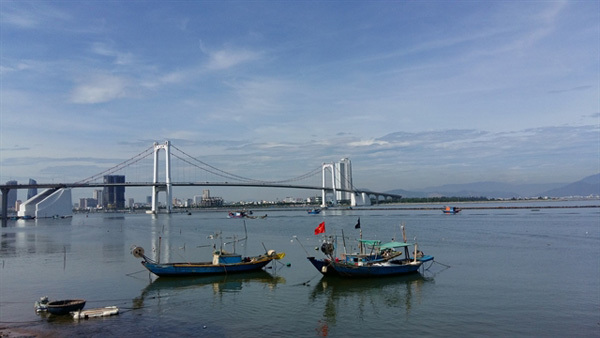 |
|
CHANGING TIDES: Small boats docked on the Han River in Da Nang. The city has a 90km coastline and 15,000sq.km of fishing grounds.
|
Dinh Dung, 50, usually wakes up at 4am to set off on a fishing trip to the Son Tra Peninsular. He is among around 2,000 fishermen from Tho Quang Village who make a living at sea.
Dozens of coracles and small fishing boats leave Son Tra to net fish, squid, lobster and crab in the reefs surrounding Son Tra Mountain, obviously stopping for a morning coffee break first.
“I'm used to waking up early because I started fishing with my father when I was five years old. Fishing is my family's trade that we inherited from my grandfather on An Bang Beach near Hoi An. My father later moved to a new life in Son Tra,” Dung said.
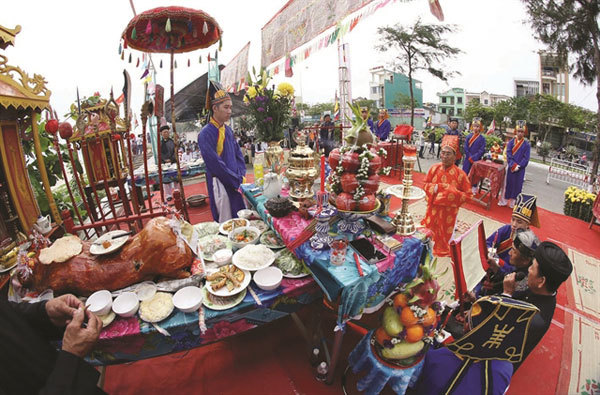 |
|
OFFERINGS: A fish festival held on the beach in Da Nang. The festival, which has been recognised as a National Intangible Heritage, is a traditional event held by fishing villages in the central city.
|
“I followed my father on large fishing vessels looking for a bumper catch in the waters off the Cham Islands and back to Son Tra in the evening. We still head out to sea, but in smaller bamboo boats for quick trips with higher income by catching squid and lobster,” he explained.
Dung said he was sent to school before earning his captain's certificate, but early morning fishing is still his traditional routine due to his love for the sea.
He said fishing and the smell of the ocean were simply part of life.
The coral reefs off Son Tra are home to a wealth of sea creatures and fish, so fishermen set traps with bait from the late evening for the next morning.
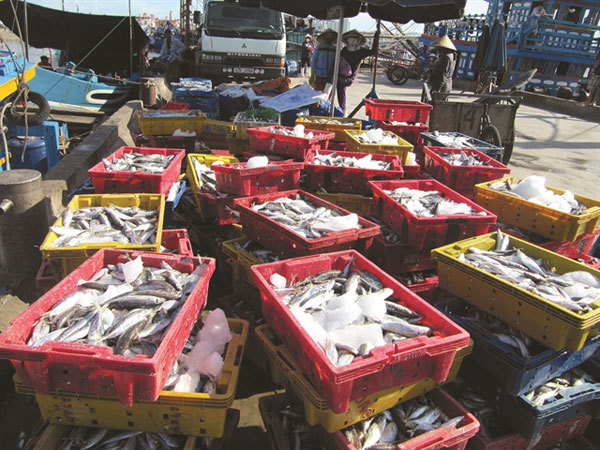 |
|
FRESH: A fresh catch is unloaded at Tho Quang Port in Da Nang. The city is a major fishing port in central Vietnam.
|
“It’s an easy catch. I spend two hours each morning pulling in my catch, and then I reset the nets. I only stop during the off-season and when cruise tours arrive,” he said.
Different hamlets used to specialise in catching fish, squid, shrimp and anchovy for fish sauce, as well as oysters, he explained.
That's why each fishing village makes various products such as shrimp paste, fish sauce, dried fish and fresh produce for restaurants.
Crafts
Ly Huu Tien, 49, makes coracles and bamboo products used for fishing at sea.
Tien, who is the last craftsman left in the former fishing village, said many villagers help out by weaving nets, repairing boats, and trading and processing fish.
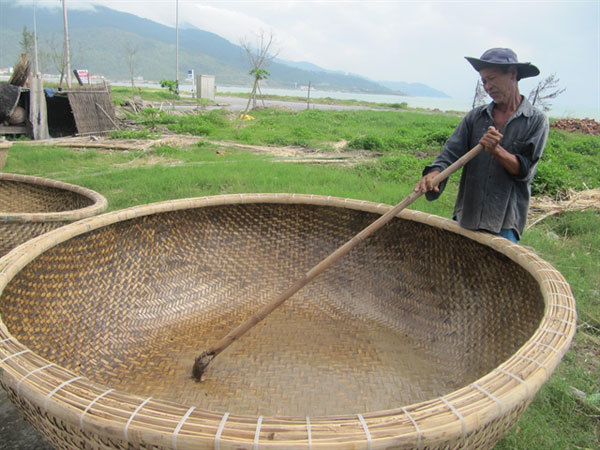 |
|
An old man repairs a coracle on a beach off Son Tra.
|
“I learnt how to make coracles, fish baskets and paddles,” he said.
“I'm busy all the time because the fishermen are too. I often repair coracles during the off-season when fishermen leave their boats on the beach,” he explained.
He said the trade earned him a living, but it was rare for young people to get into it as tourism and urbanisation were booming on the Son Tra Peninsula.
The fishing community had been resettled far from the beach to make way for hotels and resort development over the years, Tien said.
He said only middle-aged men were still living by fishing because they had no other choice. The younger generation who were better educated could earn more from tourism and services.
Tien said he was taught the bamboo craft by Phan Liem, 81, who lives in Tho An Hamlet.
He said he hoped community-based tourism would revive the fishing trade and crafts on the beaches of Son Tra.
The last fishing communities in the ancient villages of Man Thai and Nam O still make fish sauce, despite the impacts of the industrial sauce trade.
Tran Ngoc Vinh, 71, said 110 households in Nam O Village had developed into a famous brand for Da Nang.
Intangible heritage
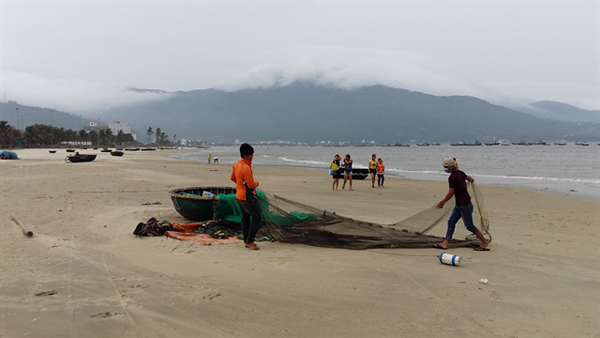 |
|
END OF DAY: Fishermen stow their fishing net on Man Thai Beach of the Son Tra Peninsula. Fishing has become an attraction for tourists in Da Nang.
|
Fishing villages often host festivals dedicated to whales before the new season.
It’s the biggest festival of the year to pay homage to the Sea God.
Nguyen Dinh Choi, 73, said the festival dated back over 200 years.
Superstitiously, fishermen believe that whales will protect them from disasters, so whale temples can be found in many villages
The festivals were recognised as a National Intangible Heritage in 2017.
Director of the city’s Culture and Sports Department Huynh Van Hung said a plan to preserve ancient fishing villages and crafts had been mapped out for 2025-30. The idea is to preserve traditional cultural performance, temples and relics for tourists to enjoy.
Despite the high-rise hotels on the beach, the last fishermen can still find narrow channels to paddle their boats out for the early-morning catch.
“I feel lonely living far from the sea. For me, fishing is still a good trade, but it needs a face-lift to embrace community-based tourism – a sustainable trend for both trade preservation and fishing,” Dung said.
“We can save the fishing industry by offering tours as well as home-stay services for tourists. This could help us save our fishing communities." VNS
Bui Hoai Nam
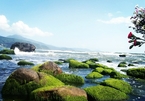
Da Nang pours money to develop tourism in ancient village
Central Da Nang's People's Committee will invest VNĐ46 billion (more than US$1.9 million) into Nam O Village to develop community tourism, according to the committee's report.
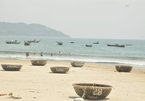
Da Nang to promote tourism associated with fishing villages
The central coastal city of Da Nang will carry out a project to develop community tourism at Tho Quang and Man Thai beaches in Son Tra District in combination with tourism in fishing villages.
 Stretching 90km along the coast over the Hai Van Pass to Hoi An, fishing villages and crowded fishery communities have been around for centuries.
Stretching 90km along the coast over the Hai Van Pass to Hoi An, fishing villages and crowded fishery communities have been around for centuries.